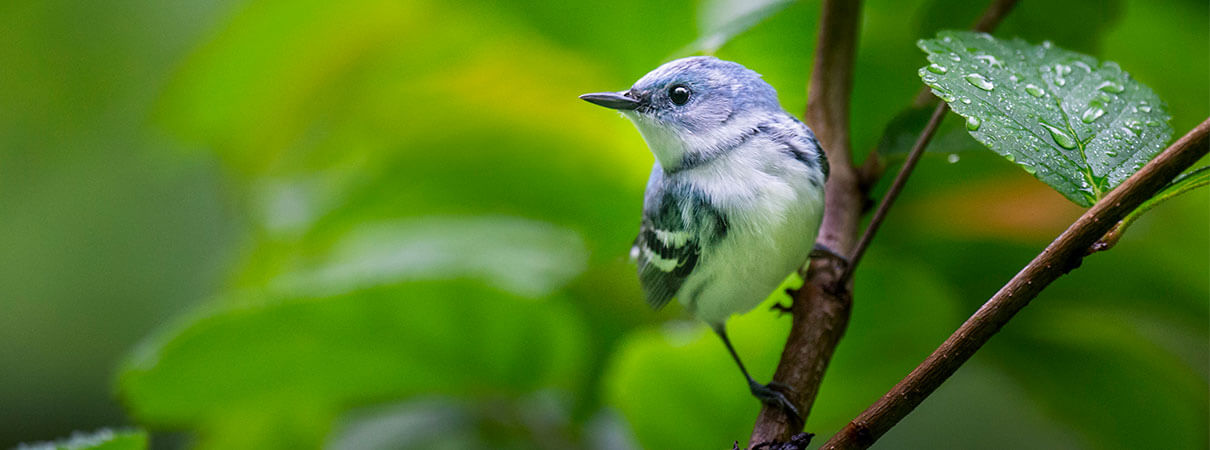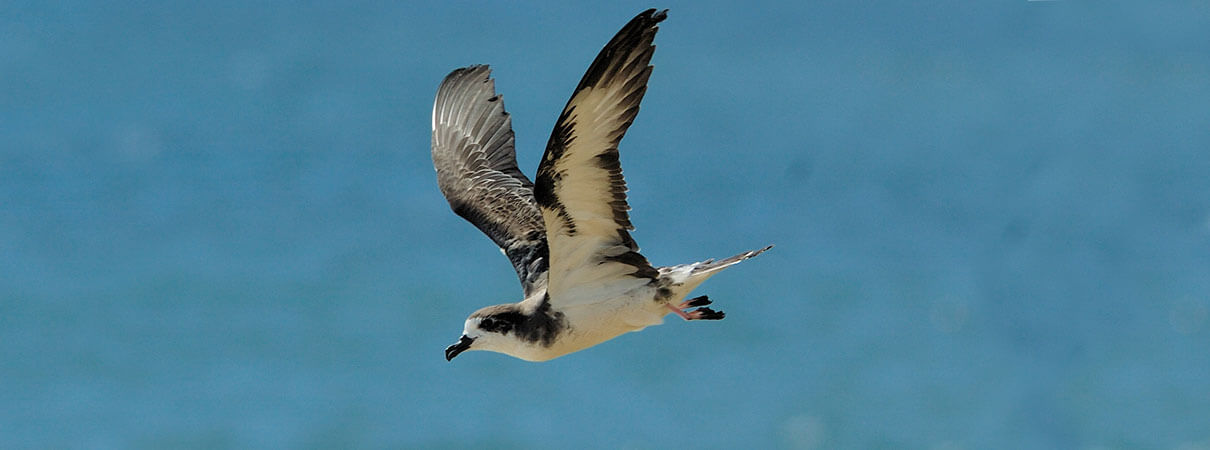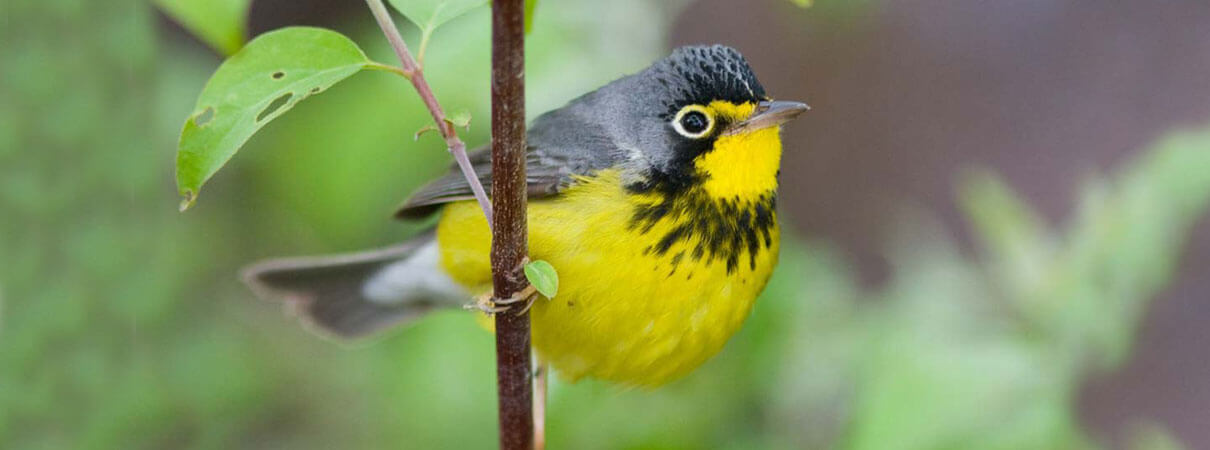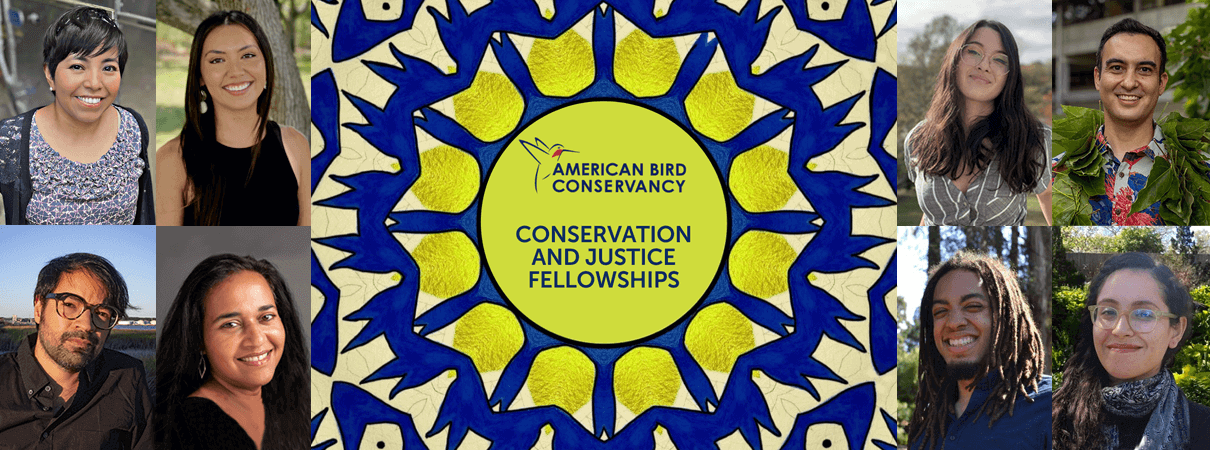American Bird Conservancy's Top Bird Conservation Results of 2022
ABC made significant strides to ensure birds have the habitats they need – and to make those habitats safer – across the Western Hemisphere.
Our results over the last 12 months once again showcase ABC's leadership in bird habitat conservation. Ensuring that birds have the places they need to thrive, we supported improvements on more than 250,000 acres of grasslands, forests, and other bird habitats across the United States; financed the creation of new protected areas totaling more than 43,000 acres for some of the Americas' most endangered bird species; planted more than 400,000 trees and shrubs; and took measurable strides to make bird habitats safer for birds — reducing threats from deadly pesticides, invasive species, window collisions — and more.
Read on to learn about 10 of ABC's biggest wins for birds and their habitats in 2022.

1. Improving 250,000 Acres for Rapidly Declining Birds
ABC continues to think big — and take measurable actions — to stop the massive decline in bird populations. Habitat loss, and threats to birds on remaining habitats, drive those declines. In response, ABC and partners — including several Migratory Bird Joint Ventures (JVs) — worked together in 2022 to improve more than 250,000 acres of habitat for rapidly disappearing bird species, most of them migratory and requiring conservation across vast areas.
In grasslands: The decline of grassland birds outpaces that of any other landbird group in the U.S. and Canada. Since 1970, populations of these birds have been reduced by more than half, reflecting a loss of more than 720 million birds. ABC is helping to reverse the trend by working with our regional JV partners and hundreds of private landowners. Together, in 2022, we enhanced management on more than 100,000 grassland acres from North Dakota to Mexico, using safely applied prescribed fire and grazing to mimic natural ecosystem processes. By promoting best management practices on private working lands, where most of these habitats occur, we are improving the prospects for declining birds, from the Chestnut-collared Longspur and Sprague's Pipit to the Eastern Meadowlark and Henslow's Sparrow.
In forests, riparian and coastal areas, and wetlands: In 2022, we worked with JVs and other partners to restore and enhance more than 150,000 acres in forests and other habitats — from Oregon to Southern California, New York to Mississippi, and places in between. These efforts aim to halt declines of species ranging from the Southwestern Willow Flycatcher and Marbled Murrelet to the Cerulean Warbler by boosting the health of bird habitat where it is needed most. For example, in 2022, ABC continued to work with several corporate and independent forestry partners to implement bird-friendly practices across thousands of acres of working forests, benefiting Swallow-tailed Kites.
The Central Hardwoods JV, staffed and supported by ABC, accomplished more than 132,000 acres of habitat restoration for birds such as the Prairie Warbler, while in the Great Lakes region, ABC staff enhanced nearly 7,000 acres for species including the Golden-winged Warbler and American Woodcock. The Lower Mississippi Valley JV partnership restored 22,337 acres of open pine forest on private lands in Arkansas, Louisiana, and Texas, providing habitat for birds such as the Red-headed Woodpecker and Northern Bobwhite. And on the Texas Coast, our SPLASh program worked with partners and local communities to remove nearly 11,000 pounds of trash from habitats where Snowy Plovers breed.
These are just a few examples of our results in 2022 — much of this work guided by our focus on the areas we call BirdScapes. In these vital areas, we target conservation efforts across declining birds' full life cycles, from breeding to wintering grounds.
2. Innovating to Ensure Healthy Bird Habitat, South of the U.S. Border
The long-distance journeys made by migratory birds, which can extend over thousands of miles, make it a great challenge to ensure these species have adequate habitat wherever they go. We're expanding efforts to ensure that birds aided by our efforts on their breeding grounds find safe passage and habitat in BirdScapes south of the U.S. border. For example, in 2022 in Guatemala's Conservation Coast BirdScape, ABC supported the acquisition of two properties by local partner FUNDAECO totaling 1,112 acres in the Cerro San Gil Protected Area, providing winter habitat for migratory birds such as the Wood Thrush. Also in this BirdScape, our shade cardamom impact investing pilot project turned profits for the first time, which were reinvested back into the project and supported the restoration of 16 acres of shade cardamom lost due to hurricanes. More than 3,150 native trees and 7,222 cardamom plants were planted in this project, an effort that will benefit birds including the Worm-eating Warbler.
In the Northern Venezuela Coastal Mountains BirdScape, with ABC support, our partner Provita planted 8,925 coffee and native trees as part of its Birds and Coffee initiative. Thanks to this project, more than 30 producers have had their coffee certified as Bird-Friendly by the Smithsonian Migratory Bird Center, helping them to earn higher profits and benefiting wintering Kentucky Warblers and many other birds.
ABC is also working to promote shade cacao farming that supports migratory birds in the Moskitia region of Honduras. ABC helped connect our local partner Cacao Miskito (a community-run cacao company) with Uncommon Cacao, a company buying sustainably sourced cacao from around the world — and now, multiple chocolatiers globally are using Moskitia cacao from Honduras. Its sales are helping ensure that local farmers receive sustainable incomes while implementing farming practices that provide habitat for wintering Ruby-throated Hummingbirds and other birds.

3. Protecting 43,000 Acres of Habitat for the Most Endangered Birds
In 2022, ABC supported the protection of 43,000 acres of habitat for many of the Americas' most endangered bird species, most of them resident birds in Latin America and the Caribbean with very small ranges. Working with a network of partners at 15 sites in eight countries, these gains bring our cumulative total of land protected to prevent bird extinctions to 1.2 million acres.
To name a few species and partners ABC helped through these efforts: Bolivia's Critically Endangered Red-fronted Macaw gained 35,975 acres of protected foraging habitat in the Pasorapa Integrated Management Natural Area, thanks to new conservation agreements with local communities by our partner Natura Bolivia. Colombia's Critically Endangered Antioquia Brushfinch — along with an undescribed antpitta — received much-needed protection with the creation of the Montañerito Paisa Reserve, established with our partner SalvaMontes. And Peru's Critically Endangered Gray-bellied Comet benefited from the establishment of the first protected area for the species, achieved in partnership with ECOAN in Peru's Sangal Valley.
ABC also helped to expand Fundación de Conservación Jocotoco's Buenaventura Reserve in Ecuador, which protects the Endangered El Oro Parakeet. This success was achieved thanks to Conserva Aves — a partnership among ABC, BirdLife International, National Audubon Society, and RedLAC that aims to create or strengthen 100 or more protected areas in nine Latin American countries.
4. Locating Two “Lost” Bird Species
You can't conserve birds if you can't find them. That's why ABC works with partners throughout the Americas, and around the world, to locate “lost” species that have not been observed for years. The Search for Lost Birds partnership — an international collaboration among ABC, Re:wild, and BirdLife International — paid dividends in 2022 with successes for two lost birds. In Colombia, ABC supported fieldwork on the Santa Marta Sabrewing, an endemic hummingbird that was rediscovered this July after not being seen for more than 10 years. The ABC-funded follow-up surveys have recorded additional observations of the species, along with the first-ever photos of a female. On the other side of the world, ABC co-led an expedition in Papua New Guinea that located the Black-naped Pheasant-Pigeon — a species last documented by scientists in 1882.
These discoveries open the door to future conservation projects to protect incredibly rare birds. The need is urgent, given the fact that two bird species in ABC's focal regions may have become functionally extinct in the wild in 2022. The last hope for Brazil's Alagoas Antwren and the ‘Akikiki of Kaua‘i is that they be maintained in captivity until their habitats are healthy enough to support the birds in the wild.

5. Improving Nesting Success to Bolster Endangered Birds
Spending much of their lives far out on the open ocean, seabirds are among the least observed and most imperiled of birds due to a suite of threats including fisheries, light pollution, marine trash, and predation by introduced species at nesting colonies. ABC and partners are addressing these threats in many vital areas for birds including the Black-capped Petrel and Waved Albatross. We reached a huge milestone in our work with partners to create a safe nesting colony of Hawaiian Petrels on Nihoku, Kaua‘i in late November 2022, when the first chick of previously translocated birds left its nest burrow and flew off to sea. The chick's parents and other Hawaiian Petrels, as well as Critically Endangered Newell's Shearwaters, had been translocated to the safety of the fenced, predator-free site on Nihoku as nestlings; after fledging and spending several years at sea, increasing numbers of birds have been returning, resulting finally in the celebrated fledgling. The event raises hopes for more nests and hatchlings in the future.
Meanwhile, in Brazil, ABC continued work with local partner Aquasis to establish new breeding populations of the Endangered Gray-breasted Parakeet. ABC supported the May 2022 release of 12 birds translocated from the only known healthy population, in the Baturite Mountains, to new breeding sites in the Aratanha Mountains. In December 2022, another group of 10 birds was released. The year ended with clear signs of the reintroduction's growing success: Birds in the new Aratanha population successfully laid six eggs.
6. Conquering a Dangerous Pesticide
In a major victory for birds, the U.S. Environmental Protection Agency (EPA) upheld its final ruling to ban chlorpyrifos, which poisons agricultural fields where many birds feed. This insecticide is deadly to birds, so the February decision that chlorpyrifos will no longer be used on most food crops (those intended for domestic consumption) was a huge win for birds like the Western Meadowlark and Grasshopper Sparrow. This win was hard-won, following more than 20 years of advocacy by ABC and partners. But we won't stop now: Work is continuing to ensure that chlorpyrifos is banned from use on all U.S.-grown crops.

7. Leveling Up on Migratory Bird Tracking
The Motus Wildlife Tracking System — an expanding network of stations that receives and collects signals from small, digitally coded tags affixed to migratory birds — has revolutionized migratory bird tracking in the Americas. To facilitate the placement of new stations that fill knowledge gaps along migratory pathways, ABC's Northwest program, in partnership with Birds Canada, has established centralized leadership, with a Motus Director hired for the United States. Through increasingly coordinated efforts, the Motus network will help us to better understand the full annual life cycles of migratory birds and to identify areas essential for conservation.
In related advances, ABC's Northern Great Plains program facilitated construction of six Motus towers to support tracking of grassland birds such as the Baird's Sparrow. And ABC's U.S. Motus Director and the ABC-led Appalachian Mountains Joint Venture, alongside other conservation partners, were awarded a major grant that will support installation of 35 new Motus receiving stations in the southeastern U.S., along with tagging projects on species including the Rusty Blackbird, Evening Grosbeak, Northern Saw-whet Owl, and Canada Warbler.
ABC is also tracking Long-billed Curlews and Eastern and Western Meadowlarks, using tiny satellite transmitters, on their migration from the northern U.S. and Canada to Mexico. One of our curlews was tagged in Montana and later re-found by partners when it visited the Texas Panhandle.
8. Targeting Mosquitoes and Tackling Other Threats
Two-thirds of Hawaiian native avian diversity — 95 species — has disappeared since human settlement of the islands, earning the state its grim label as “the bird extinction capital of the world.” In response, ABC and partners launched the Birds, Not Mosquitoes initiative — an all-out effort to protect remaining Hawaiian honeycreepers from deadly avian malaria, which is transmitted by mosquitoes introduced to the islands.
The project will use common, naturally occurring bacteria as "mosquito birth control" to suppress populations of invasive mosquitoes and reduce the spread of the deadly disease. During the last year, ABC and partners made significant progress in a long and detailed process: The team developed and tested a birth control mosquito in a laboratory, applied for the required EPA registration, conducted extensive public outreach to answer questions and address concerns raised by the Hawaiian community, and advanced other activities to ensure an early 2023 test release date.
Birds face many other threats to their existence, and ABC works to address those that cause the most harm. In 2022, we successfully defended against a state bill in Hawai‘i (and similar legislation in Kansas, Virginia, and West Virginia) that would have resulted in more cats on the landscape. We defended against a threat to a bird-friendly glass ordinance in Madison, Wisconsin, bringing the number of states and municipalities with bird-friendly building guidelines to more than 22. And, to promote the availability of bird-friendly glass, our two glass-testing tunnels evaluated samples from 19 manufacturers, including companies from the U.S., South Korea, Germany, and Brazil.
9. Planting More than 400,000 Trees and Shrubs
For many bird species, trees and shrubs are essential to survival, and ABC is working with partners throughout the Western Hemisphere to enhance existing bird habitat — and create more — by supporting reforestation efforts. In 2022, ABC and partners planted more than 400,000 trees and shrubs that will benefit some of the world's most endangered bird species, including Peru's Ash-breasted Tit-Tyrant. To date, ABC has supported the planting of more than 7.2 million trees and shrubs, with work in Peru standing out: In 2022, our partner ECOAN worked with the Patacancha community in the Vilcanota Mountains to plant 62,150 Polylepis tree saplings in a single day — the largest number ever planted at once during the annual Queuña Raymi (Polylepis Festival).
Of course, birds aren't the only beneficiaries of this reforestation work. Tree-planting also helps protect local water supplies and sequesters carbon, aiding global efforts to combat climate change, and much more.

10. Launching Our Conservation and Justice Fellowship Program
One of ABC's intrinsic beliefs is that bird conservation can only be truly sustainable when it is ethical and inclusive. In 2022, we launched an innovative Conservation and Justice Fellowship program to advance conservation approaches that benefit both birds and people. Our inaugural cohort of eight Fellows has spent the past six months working with ABC staff and partners across the Americas, focusing on a variety of topics, from understanding the impact of pesticides on birds and migrant farmworkers, to promoting Indigenous grassland stewardship. Their discoveries will help inform ABC's conservation efforts and bird conservation more broadly.


















































